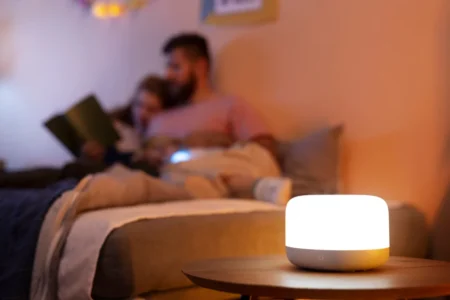 Motion-activated lighting is a smart and efficient way to enhance safety, convenience, and energy efficiency in your home. By automatically turning on when motion is detected and off when no movement is sensed, motion-activated lights provide hands-free illumination in key areas, such as:
Motion-activated lighting is a smart and efficient way to enhance safety, convenience, and energy efficiency in your home. By automatically turning on when motion is detected and off when no movement is sensed, motion-activated lights provide hands-free illumination in key areas, such as:
- entryways,
- hallways, and
- outdoor spaces.
Implementing motion-activated lighting in key areas of your home offers numerous benefits, including:
- enhanced safety and security,
- convenient hands-free illumination,
- energy efficiency,
- customizable settings, and
- easy installation and maintenance.
By strategically placing motion-activated lights in entryways, hallways, outdoor spaces, and other high-traffic areas, you can enjoy improved:
- visibility,
- security, and
- peace of mind while reducing energy consumption and utility costs.
Today, we’ll explore the benefits of implementing motion-activated lighting in your home and how to optimize its usage for maximum effectiveness.
Enhanced Safety and Security
One of the primary benefits of motion-activated lighting is enhanced safety and security. By illuminating key areas around your home, such as pathways, staircases, and entryways, motion-activated lights help prevent accidents and deter potential intruders.
For example, installing motion-activated lights near your front door or garage can provide visibility when entering or exiting your home at night, reducing the risk of trips and falls. Similarly, placing motion-activated lights along dark pathways or around the perimeter of your property can increase visibility and security, discouraging unwanted visitors and enhancing peace of mind.
Convenient Hands-Free Illumination
Motion-activated lighting offers convenient hands-free illumination, eliminating the need to fumble for light switches in dark or dimly lit areas. Whether you’re carrying groceries into the house, walking down a hallway, or navigating outdoor spaces at night, motion-activated lights provide instant illumination when and where you need them most.
For instance, motion-activated lights in closets, pantries, or laundry rooms automatically turn on when you enter and off when you leave, making it easy to find what you need without searching for a light switch. Similarly, motion-activated lights in outdoor spaces, such as patios, driveways, and pathways, provide visibility and security without the hassle of manually switching lights on and off.
Energy Efficiency and Cost Savings
Another advantage of motion-activated lighting is its energy efficiency and cost-saving potential. By only turning on when motion is detected and off when no movement is sensed, motion-activated lights help conserve energy and reduce electricity consumption, leading to lower utility bills and environmental impact.
For example, replacing traditional outdoor security lights with motion-activated fixtures can significantly reduce energy usage by eliminating the need for continuous illumination throughout the night. Similarly, installing motion-activated lights in indoor spaces with infrequent use, such as guest rooms or basements, can help minimize energy waste without sacrificing convenience or safety.
Customizable Settings and Controls
Most motion-activated lights offer customizable settings and controls, allowing you to tailor the lighting experience to your preferences and specific needs. Depending on the model, you can adjust factors such as:
- sensitivity,
- duration, and
- ambient light levels to optimize performance and functionality.
For instance, you can adjust the sensitivity of motion sensors to avoid false triggers from pets or passing vehicles, ensuring that lights only activate when human motion is detected. You can also adjust the duration of illumination to suit your needs. It ranges from a few seconds to several minutes after motion ceases.
Easy Installation and Maintenance
Installing motion-activated lighting is relatively simple, requiring minimal tools and expertise. Most motion-activated lights come with all the necessary hardware and instructions for installation. It allows you to easily retrofit existing fixtures or add new ones to your home.
For example, battery-operated motion-activated lights require no wiring and can be installed quickly with adhesive or mounting brackets. Hardwired motion-activated lights may require more installation effort but offer long-term reliability and functionality with proper maintenance.
Consider incorporating motion-activated lighting into your home to create a safer, more efficient, and more comfortable living environment for you and your family.
Picture Credit: Freepik



